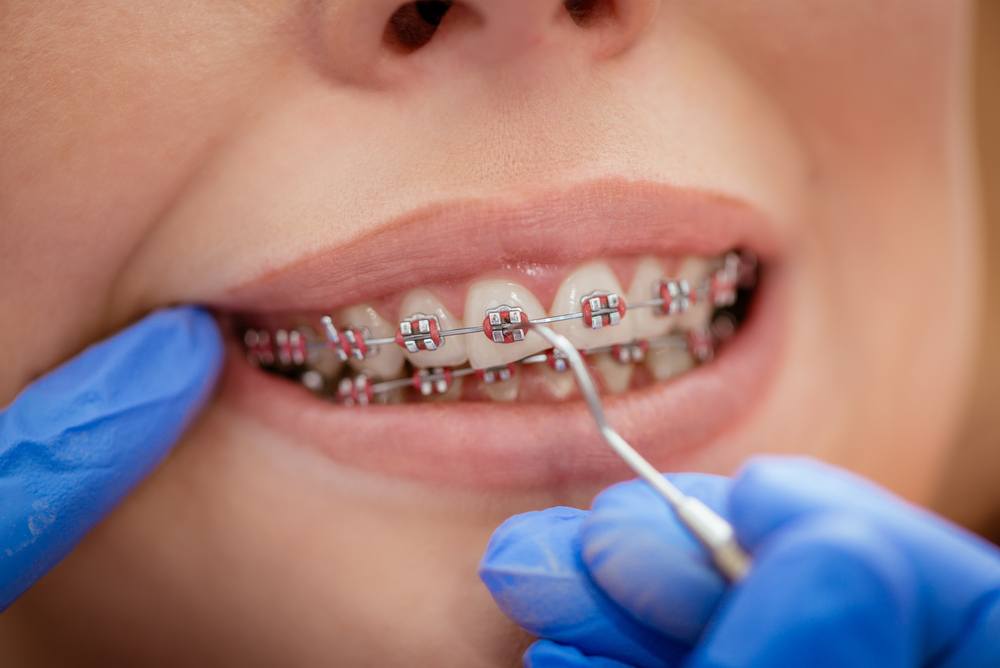How Cumming Orthodontics Can Transform Your Smile with Invisalign and Braces
Comprehensive Guide to Orthodontics Procedures for Remedying Oral Misalignments
In the world of orthodontics, the trip to accomplishing a flawlessly straightened smile involves a myriad of treatments customized to remedy oral misalignments. From typical dental braces to undetectable aligners and even surgical options, the field of orthodontics uses an array of solutions to attend to varying degrees of dental abnormalities. Recognizing the details of each treatment, including their systems, advantages, and prospective disadvantages, is crucial in making informed choices regarding one's orthodontic treatment. As we browse via the detailed overview to orthodontic procedures for remedying dental imbalances, the elaborate information of each approach will certainly unravel, clarifying the course toward a practical and unified oral positioning.
Orthodontic Procedures Summary

In enhancement to clear aligners and standard braces, orthodontists may also suggest other interventions like headwear, palatal expanders, or retainers to address particular positioning issues (invisalign). These procedures are tailored to every client's special requirements and might entail a combination of therapies to achieve the wanted results. Routine adjustments and monitoring are essential components of orthodontic therapy to guarantee progression gets on track and to make any kind of needed adjustments along the means. By undertaking orthodontic treatments, people can not only accomplish a straighter smile yet also improve their total oral health and function.
Typical Braces: Just How They Function
When considering orthodontic treatments for dental imbalances, typical braces stand out as a time-tested approach for correcting teeth placing. Traditional dental braces consist of braces, cables, and bands that collaborate to use continuous pressure on the teeth, slowly relocating them right into the desired positioning. The brackets are affixed to the teeth making use of a special adhesive, and the cords are threaded with the braces. By readjusting the stress of the cables, orthodontists can control the instructions and force used to each tooth, assisting them into correct alignment with time.
One trick aspect of how traditional dental braces job is the procedure of bone renovation. As stress is related to the teeth through the dental braces, the bone surrounding the teeth is improved to support the brand-new tooth placements. This renovation is crucial for the lasting stability of the remedied positioning. People will require routine adjustments at the orthodontist's office to make sure the dental braces proceed to apply the right stress for effective teeth motion.
Unseen Aligners: Disadvantages and pros
These clear, customized trays are basically unnoticeable when used, making them an appealing alternative for individuals looking for a much more cosmetically pleasing orthodontic therapy. People can get rid of the aligners before consuming or brushing their teeth, reducing the danger of food getting stuck in the appliance and simplifying the cleansing process.

Surgical Orthodontic Options
Surgical interventions in orthodontics existing sensible alternatives for dealing with complicated oral misalignments that might not be effectively dealt with via standard orthodontic treatments. While invisible aligners and typical braces can deal with many orthodontic issues, specific instances require surgical treatment to achieve optimum outcomes. Surgical orthodontic options are generally advised for severe malocclusions, considerable jaw discrepancies, and situations where the underlying bone framework needs adjustment to attain correct alignment.
One common medical orthodontic procedure is orthognathic surgical procedure, which includes repositioning the jaws to correct useful problems such as trouble talking or eating. This surgical procedure is usually performed in partnership with an orthodontist who helps line up the teeth prior to and after the treatment. Surgical orthodontics might likewise involve treatments to expose affected teeth, remove excess great site periodontal cells, or improve the jawbone to create an extra unified face profile.
Prior to considering medical orthodontic options, patients go through a detailed assessment to determine the need and prospective benefits of such treatments. invisalign. While surgery might appear daunting, it can dramatically improve both the feature and appearances of the smile in cases where standard orthodontic therapies fail
Retainers and Post-Treatment Treatment

Failure to abide with post-treatment sites treatment guidelines can result in relapse, where the teeth gradually move back towards their initial placements. Consistent retainer wear, great oral hygiene, and normal oral check-ups are important for preserving the results attained through orthodontic surgery and ensuring the long-lasting stability of the fixed oral placement.
Verdict
In final thought, orthodontic treatments offer numerous choices for dealing with oral misalignments. Typical braces make use of metal braces and cables to move teeth into proper placement. Unseen aligners offer an even more very discreet alternative yet might not be ideal for all cases. Surgical orthodontic alternatives are readily available for more serious imbalances. Retainers are generally used post-treatment to keep the new positioning. Generally, orthodontic treatments can properly local search for dentists boost dental health and wellness and aesthetic appearance.
As we browse via the thorough guide to orthodontic treatments for fixing dental imbalances, the intricate details of each method will unfold, losing light on the course towards a useful and harmonious dental positioning. - aligners
One of the most typical orthodontic therapies is the usage of dental braces, which are composed of steel brackets and wires that use gentle stress to progressively move teeth into the preferred position.When considering orthodontic treatments for dental misalignments, traditional braces stand out as a tried and true technique for remedying teeth positioning. Furthermore, invisible aligners might not be suitable for complex orthodontic problems that call for even more considerable teeth motion, as they are commonly recommended for moderate to moderate instances. Retainers are tailor-made orthodontic tools made to hold teeth in their dealt with positions after the conclusion of orthodontic treatment.